Last non-hybrid McLaren is also one of the purest supercars out there.
Taking your best and making it better is always a challenge, but that’s not stopped McLaren from attempting. The 720S was, and still is, one of the most unadulterated supercars that rewards driving enthusiasts with explosive performance and all the drama expected of a supercar. It already is at the very top, but McLaren claims the 750S has outdone it. To gather conclusive evidence, and verify the arguably tall claim, we went all the way to Portugal to sample the coupe and the spider, both on the road and on the track.
McLaren 750S exterior design
At first glance, you’d walk past the 750S thinking it’s a 720S, or even the 765LT because it takes one McLaren nerd to identify the other McLaren nerd. I say nerd, because that is exactly what this car is under the spaceship-like styling. It might look similar to its predecessors, but 30 percent of the car is all new or updated.
The front is unmistakably a McLaren, but the reprofiled bumpers that get sharper air intakes and an extended front splitter are new. The digital LED headlamps get the characteristic McLaren design, but they’re narrower and you can opt for either a body coloured headlamp casing or a carbon fibre one. The same goes for the bonnet, which is aluminium as standard, but you can opt for a carbon fibre one and shed some more weight.
Over to the side, the vortex-themed wheels look stunning – 19-inch at the front and 20-inch at the rear with Pirelli P-Zero rubber wrapped around them. There is also a choice of tyres depending on your preference: if the standard P-Zeros aren’t good enough, you can opt for the P-Zero Corsa and even the track focused P-Zero Trofeo R. Behind the swanky wheels are massive 390mm carbon ceramic discs, which, if you opt for the ‘Track brake pack’ get you monobloc calipers as well.
Ground clearance is typical of a supercar, but there is a nose-lift function that takes just 4secs to rise – 6 seconds quicker than the 720S and even more sensitive.
Towards the rear, it is all about aero. The rear wing is larger by 20 percent aiding better downforce and braking, and there is a new exhaust as well. McLaren says the exhaust is 2.2kg lighter than the 720S and has been tuned to sound more full and throaty.
The rear bumpers too have been reprofiled with ducts to relieve pressure from the wheel well, and there’s a new diffuser for better aero. On the coupe, there is also the option of a glass casing that gives you a peek into the V8 engine bay, along with vents that aid cooling.

On the spider though, you won’t be getting a visual of the engine. The flying buttresses guide airflow over the rear and enhance rearward visibility. That said, there hasn’t been any compromise on the spider despite the missing roof.
The carbon-fibre tub and the construction of the monocoque is strong enough and does not need any additional reinforcement. That means very similar performance (just 0.1secs slower in performance times), but with a lot more sensation. The retractable top can be up in just 11 seconds and you can raise or lower it at speeds up to 50kph.
McLaren 750S interior and features
The drama while opening the doors on every McLaren always brings upon a smile. Once up, you can see the carbon tub, and have to swing your leg over it and crouch into the driver’s seat. It is undoubtedly a snug fit, and adults with large body frames will find it cramped. The sport seats are a lot more forgiving than the full bore carbon bucket seats that are in the options list, but even then, you need to have a certain level of body-fat to be properly comfortable in them. There is electric adjust though, and finding the right driving position is extremely easy.
The interior is in line with the overall theme of the car, which is focused on performance. Functionality takes top spot, so the interior looks purposeful. It is a mesh of Alcantara or Race-Tex and carbon fibre with a few plastics scattered around.
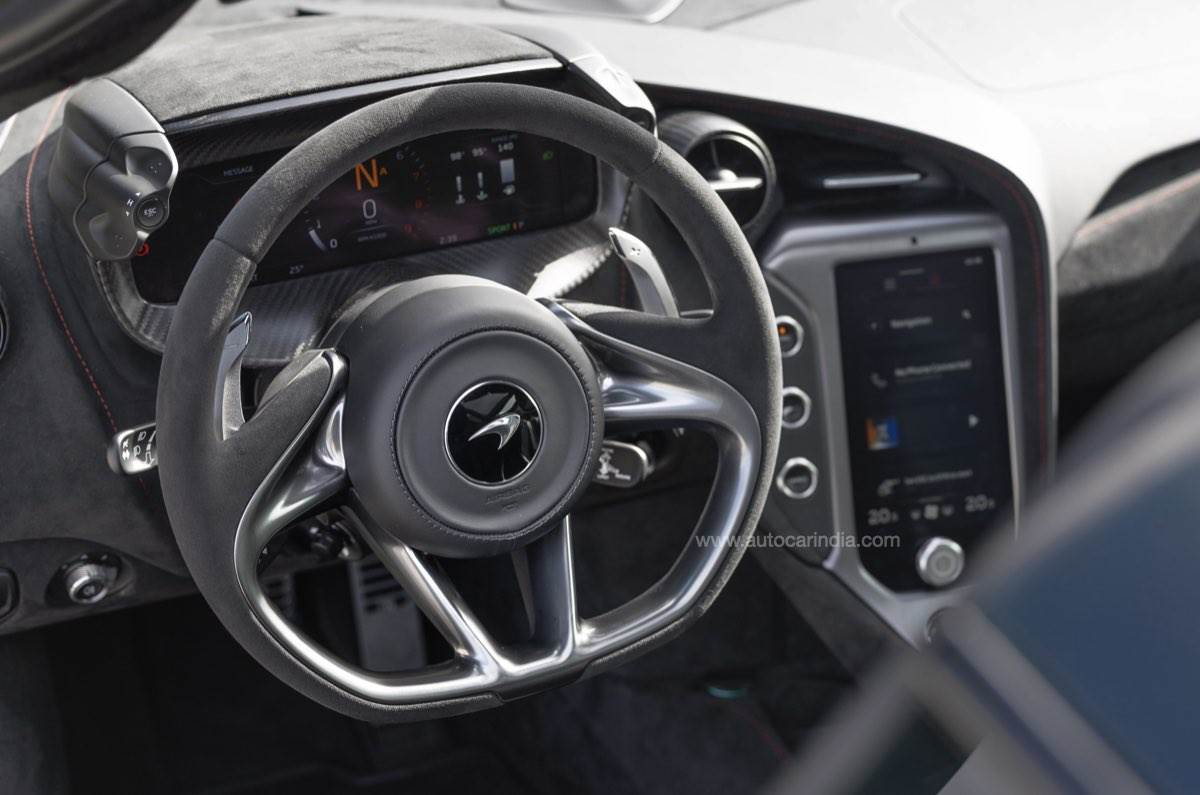
The steering is completely button-less to avoid any distractions; the instrument cluster is now a fixed screen, not swivelling, and it’s honestly a very cool-looking cluster on the 720S; and the rocker switches for the drive mode and traction control are now at a much more convenient spot right besides the instrument cluster.
The centre console also gets the same vertical-oriented screen as before, but it has updated graphics, Apple CarPlay as standard, and it has in-built navigation and a new updated 360-degree camera as well. Surrounding these are the buttons for the aero, launch control and DRS. There’s also a 12-speaker Bowers and Wilkins audio system available as an option, but when you have a twin-turbo V8 strapped to your spine, you’re better off avoiding that expense.
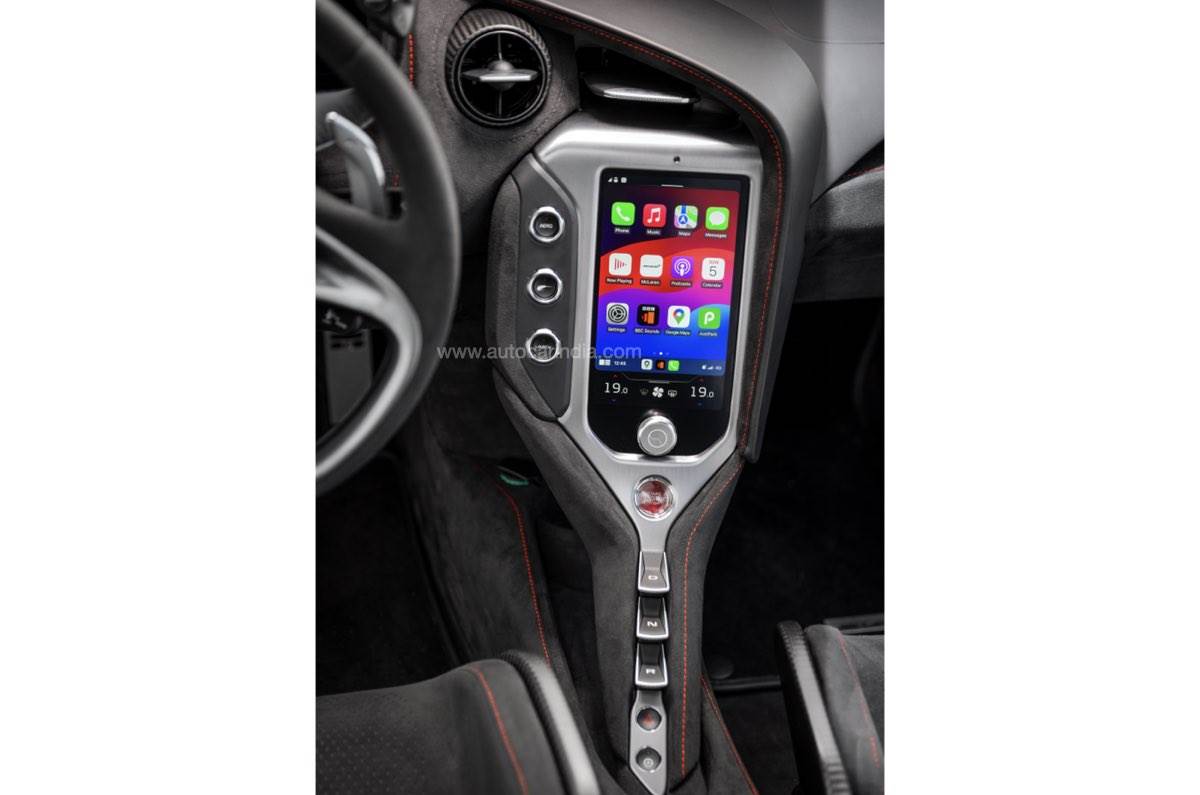
On the spider though, there’s a sunroof once the roof comes up, which, at the touch of a button can add a layer of tint to avoid the scalding sun. And there is also a rear windscreen to help with wind buffeting.
So, a cabin that has all the necessary bits and bobs, but remains true to its performance-oriented roots. If you want a bit more jazz, you can opt for Nappa leather and a lot more from the accessories list, but since this is a supercar, its best to accept it in its natural state.
McLaren 750S on-road performance
The 750S gets the same M840T engine as the 720S, albeit with plenty of revisions. The 4.0-litre twin-turbo, flat-plane V8 now produces 750hp and 800Nm with no electrical assist from either an electric turbo, nor a hybrid battery setup. It is raw and undiluted and that’s what adds to the charm. Before we hit the fantastic Estoril circuit, it was time to sample the 750S on the streets of Lisbon.
As soon as you get going, there is an ease with which the 750S goes about its driving. It doesn’t feel wild and raucous, but instead, hides its monstrous power figures under a layer of calmness and comfort.
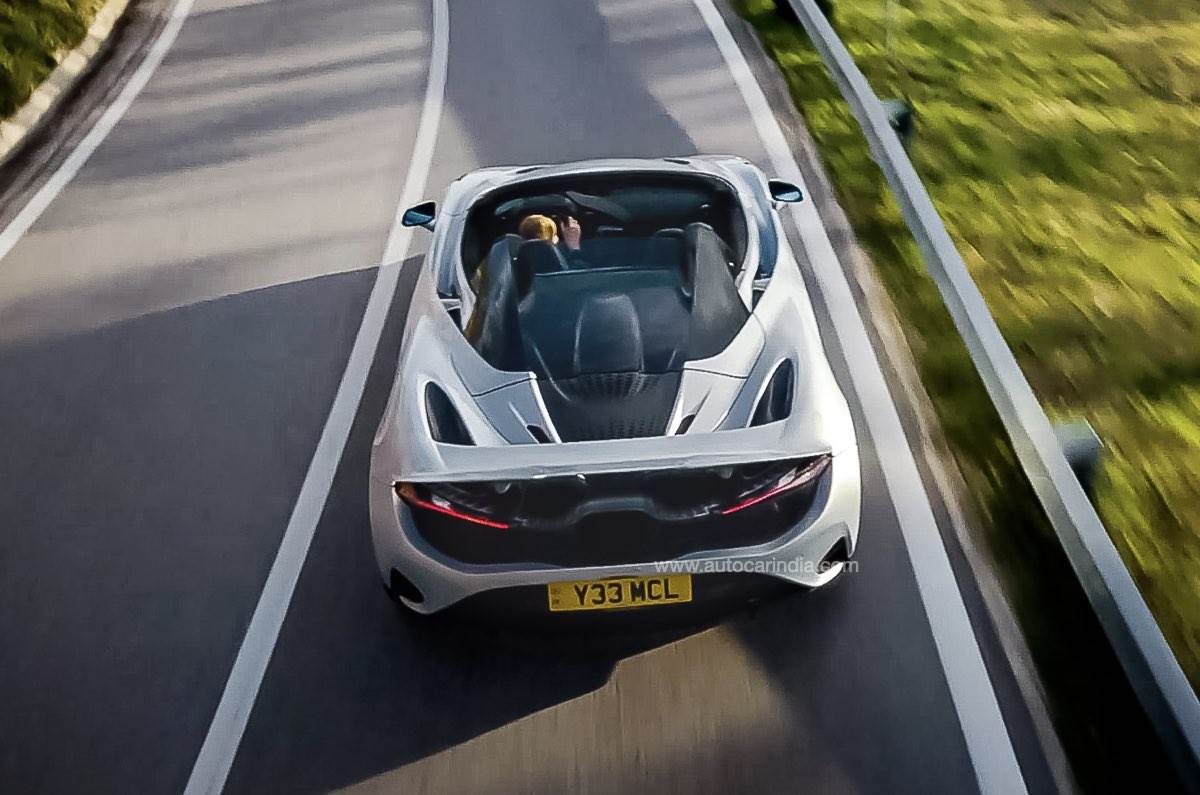
It ambles along happily around town in a discreet manner, with the loudest bit being the design. The exhaust is muted with a faint rumble and the steering, although hydraulic, is light and easy to twirl.
Leave behind the moderately busy town to get on an empty, winding ribbon, and you will notice a shift in personalities. Shift the drive mode to Sport, and you will have a supercar that was as docile as a Labrador a few seconds ago, turn into a Pitbull.
The engine barks into life as the gearbox drops the gears, the steering weighs up, the suspension firms up and the full might of a proper supercar is available at your right foot. As you dip and rise through the crests and swoop around long bends, the surgical precision with which the chassis behaves impresses the most.
The visibility is excellent, the steering feedback is natural and the meaty torque band allows for hysterical acceleration, no matter how high up the gears you are. Even more impressive is the feel from behind the wheel of the spider.
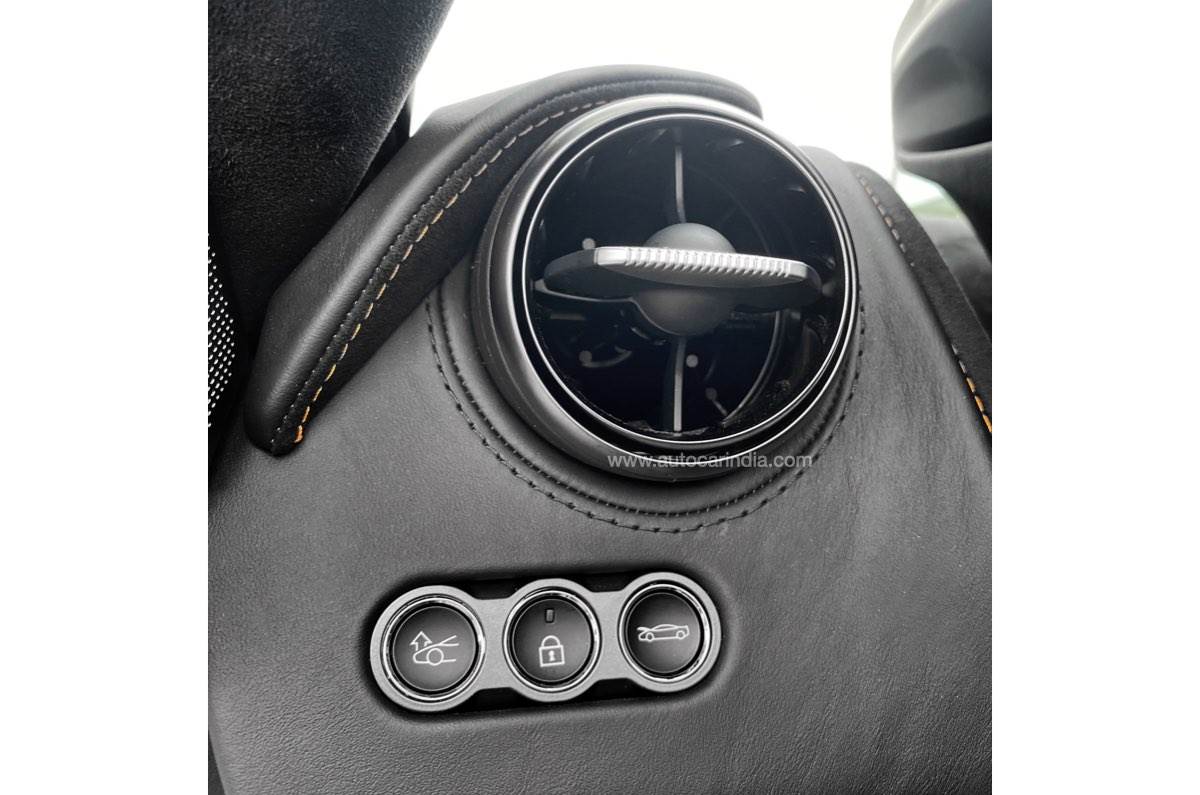
You hear a lot more of the engine as the turbos spool up, the eargasmic wastegate sounds and the childish but hilarious pops and bangs on downshifts. If you’re primarily driving on the road, it is the spider that takes the cake.
The ride comfort too is shockingly good for a low-slung supercar. Sure, the cobbled streets of Portugal don’t hold a candle to Indian road conditions, but there was enough out there that would have rocked every bone in my body in any other supercar. In this, it was like a hot-hatch. A slight rumble, but never jarring. You almost forget that it’s a seriously fast, and seriously focused race car while you’re out on the road.
However, put it on a track and the rose tinted-glasses turn into a focused visor in no time.
McLaren 750S track performance
Numbers don’t lie, and the 750S is all about that. In typical McLaren fashion, there isn’t a whole lot different from the already manic 720S, but instead you get marginal improvements and tweaks, which, when combined, make a huge difference. Switch to ‘Track’ from ‘Sport’ and it changes character in a flash. The suspension is even tauter, the engine at its full-bore, no-holds-barred setting, the steering and brake feel are at the most optimum, and the aero’s ready to slice every ounce of air and turn it into downforce.
As I get out of the pit lane and squeeze my right foot, I am completely oblivious that it misses electric assist. There’s simply no lag to complain of as the engine growls and catapults the car into triple digit speeds in a blur.
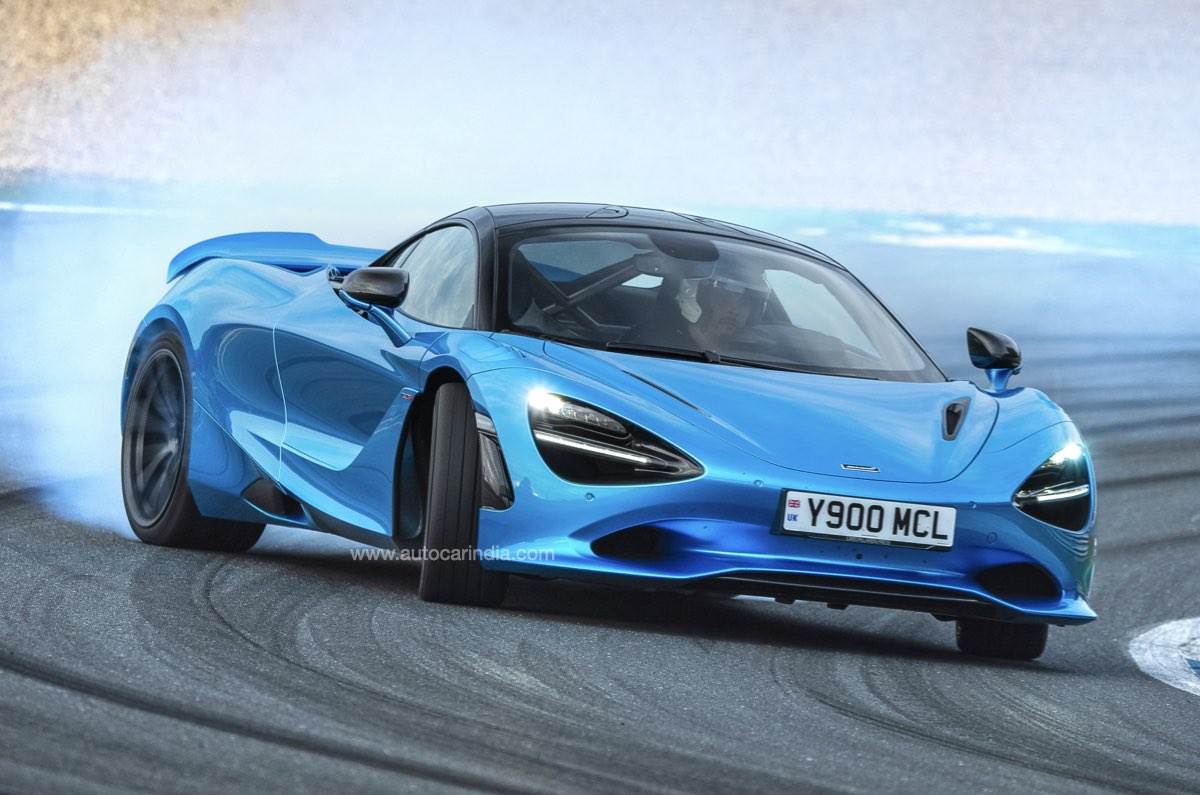
Zero-100kph is a super quick 2.8secs, 0-200kph is a jaw-droppingly fast 7.2secs and if you have the space, 0-300kph will be done in 19.8secs. If drag racing is what you choose to do with the 750S, it will do the standing quarter in 10.1secs. That’s quicker than the Porsche Taycan Turbo S. Even electric supercar royalty can’t beat this.
So how does it do it despite having no electric assist? The answer is in the small adjustments. McLaren has reduced the final drive by 15 percent giving it 10 percent faster acceleration through the gears. The engine has higher cylinder pressures, twin fuel pumps for high fuel-flow rate, better turbo boost pressure, lightweight pistons and better calibration, all to obtain one primary result – speed. What assists the engine in equal measure, is the 7-speed gearbox, which, like the rest of the car, is heavy on nerdiness.
The pinion and crown wheel within the transmission final drive is derived from F1 using a nickel chromoly alloy. The shifts in Track mode are also smoother and quicker in comparison to the raw and unhinged Sports mode, and the DRS function automatically opens up the rear wing to help attain higher speeds on straights.
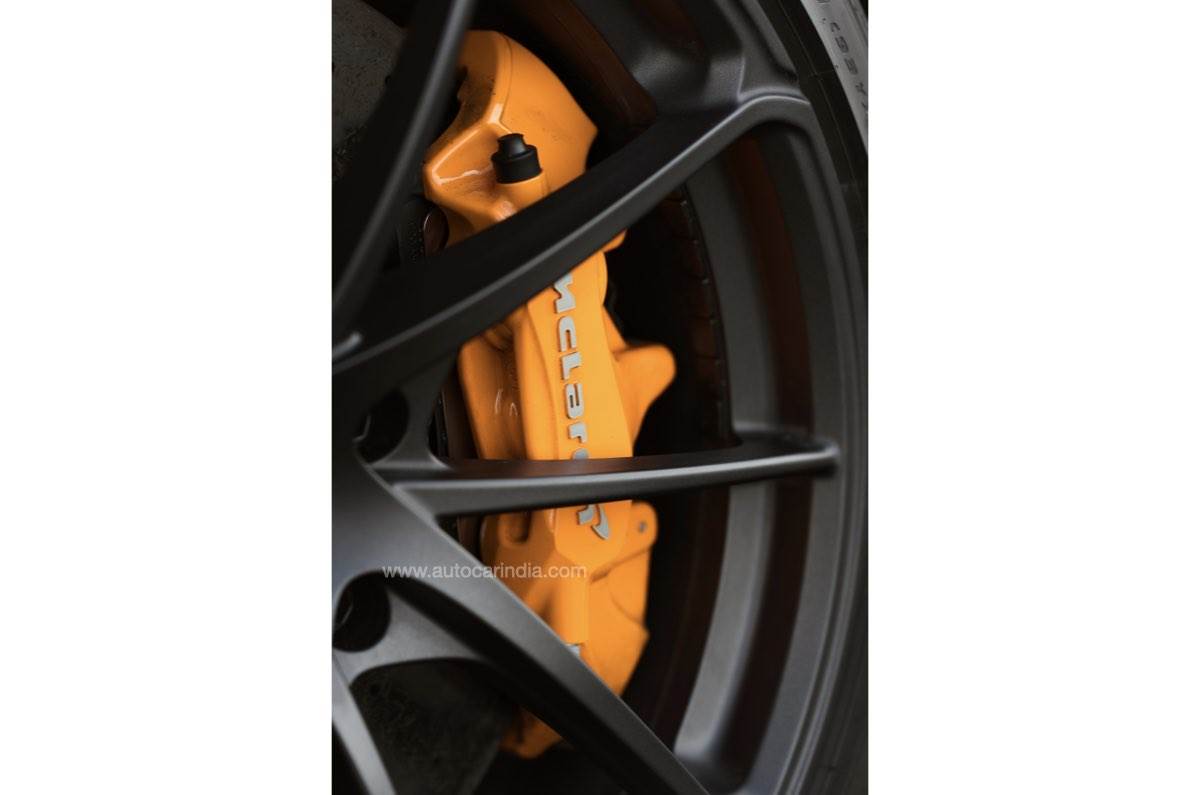
Also exclusive to Sport and Track mode is a new ‘limit downshift’ transmission function, which means that if the driver calls for a downshift that would over-rev the engine, the software acknowledges the request but changes gears only when engine speed and road speed can be synced. It essentially allows the rev needle to bounce on the limiter before downshifting, and that’s always a laugh.
And this is only the straights. You get to the corners and it is a whole different league in which the 750S operates. The ProActive Chassis Control (PCC; in its third generation now) has gotten nerdier, and as a result, even more incredible. The accumulators in the struts are adjusted to help ride comfort, roll control, steering feedback and cornering balance. Additionally, 2kg has been shaved off by using new spring and damper design, and the front track is wider by 6mm for better grip. The setup is 3 percent softer at the front and 4 percent stiffer at the rear, and it is such minor tweaks that contribute to the 750S’ gains over the 720S.
Handling is pure magic, with a sensational amount of feel from the hydraulic-assisted steering and the suspension wizardry. But don’t think you can’t have fun in this because there is variable drift control with a wide breadth of settings to slowly guide you into turning out Chris Harris-style power slides. It will take practice, but the car will help you without any intervention from the electronics. However, while going quick is exceptionally effortless, slowing down is equally impressive.
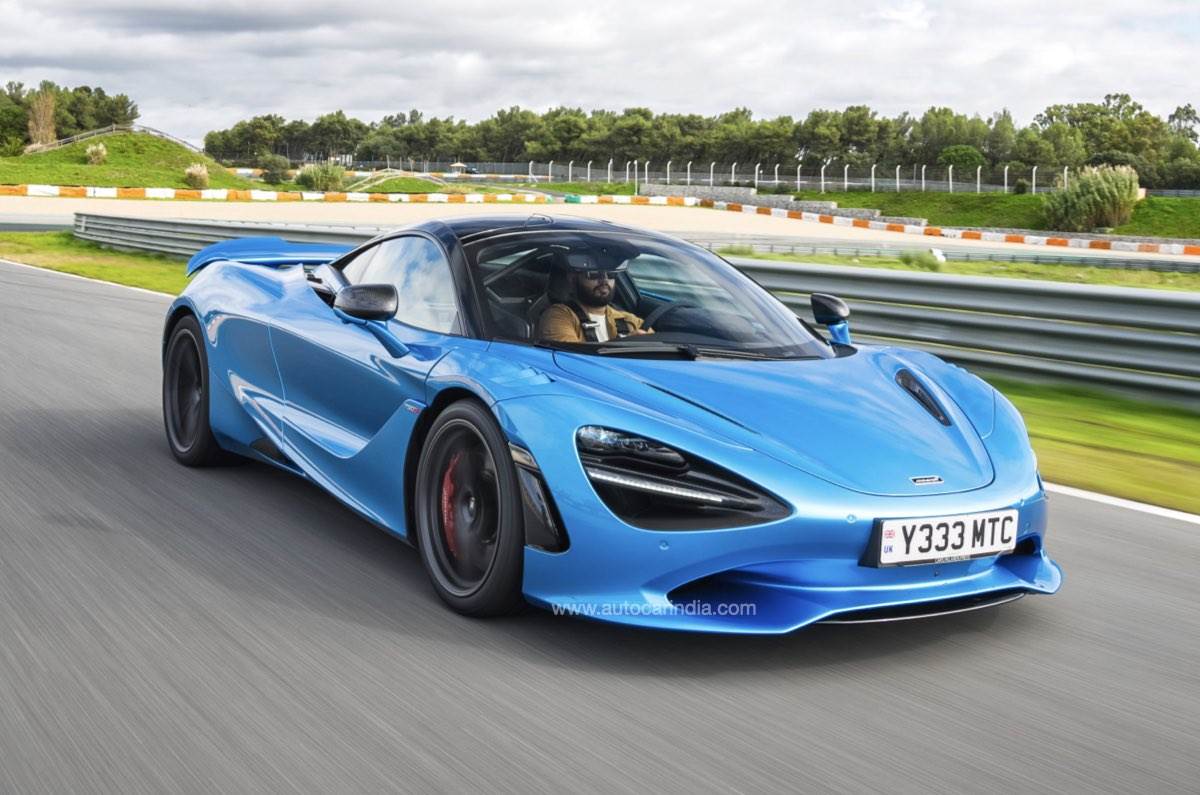
The 750S gets a new brake setup with a new brake booster to improve pedal feel and consistency. The addition of a vacuum pump ensures consistent braking irrespective of elevation changes, and the larger wing acts as an air brake. Should you opt for the Track Brake Pack that gets you monobloc front calipers derived from the McLaren Senna, the braking power will be as strong as you can get on any supercar. Shedding speed from 100-0kph takes just 30 metres, which is enough brake force to push liquids in your organs all the way front.
McLaren 750S price, verdict
The 750S is as pure as a supercar can get. Mid-engined, rear-wheel drive and with no electric assist, it is the last of the McLaren’s to have a – dare I say it – old-school approach to speed and performance. It is sensationally fast and has righted almost all the minor wrongs with the already impressive 720S. But behind the laboratory-like precision is a supercar that also loves to have fun and slide around. It has plenty of drama to make jaws drop and plenty of performance to blow past almost all of its rivals.
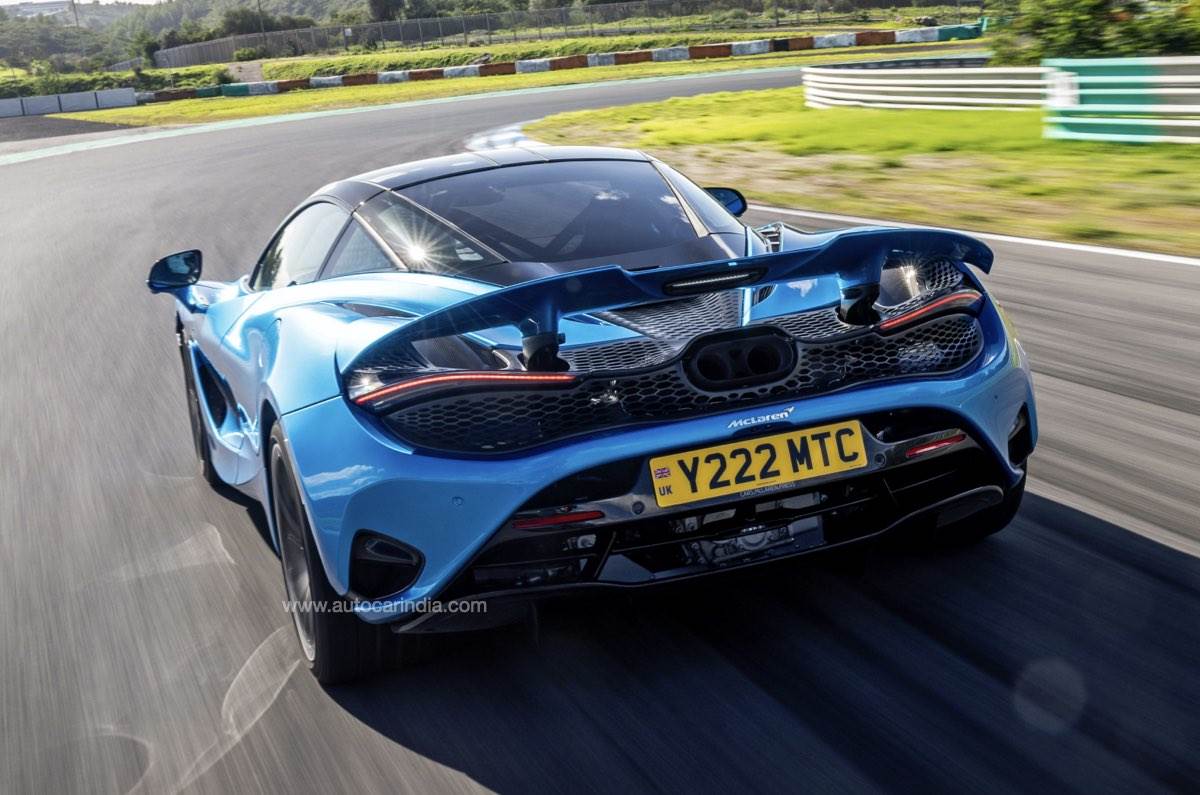
Living with it is also easy thanks to a comfy ride and calm city manners, and then there’s the backing of a 3-year servicing and warranty package with extended warranty plans up to 15 years from its first ownership year that can also be transferred to new owners. And if that isn’t enough, there is also MSO (McLaren Special Operations) that will ensure you have the most exclusive 750S in the world thanks to a host of bespoke customisation options.
However, there is a price to pay for all the performance that you get. The coupe starts at Rs 5.9 crore and the spider at Rs 6.5 crore (both prices ex-showroom, India), making it an expensive proposition. That being said, if you want a seriously fast, focused and striking supercar that will leave you grinning from ear to ear, the 750S couldn’t be more right.
























